In the Graveyard, behind where Providence Chapel once stood, are several other ex servicemen who are either buried, or simply commemorated on family Headstones. Incidentally, Gordon Whittaker who is on the Memorial is also commemorated on his family’s Headstone, but showing the wrong date of his being killed in action. There is also a chap who worked on Munitions during the War years who lost his life in an explosion at his place of work.

There are two graves surmounted by Commonwealth War Graves Headstones which record the name, regiment, number and date of death of the two individuals. They are 140179 Private Charles Bratt, Machine Gun Corps (Infantry) who died on the 24th of November 1918. Charles was born at Clowbridge, a village barely a mile towards Burnley from Loveclough. His mother Margaret was a widow and in 1911 both he, his mother, his two sisters and two brothers were living in Brief Street, Burnley. He died at number 15 Milner Street, Burnley and his occupation in civilian life was a Cotton Warehouseman. Charles died not quite two weeks after the signing of the Armistice, and was the result of contracting Lobar Pneumonia attributed to the Spanish Flu epidemic that was prevalent at that time and went on to kill more people globally than were lost in the First World War! Charles also had two brothers who served, Alfred, and Moses, who both served with the East Lancashire Regiment and were both medically discharged.
The second War Graves Headstone is that of Private Alfred Spencer.
Military Funeral Today
Two Sons Sacrificed, one in April the other in May.
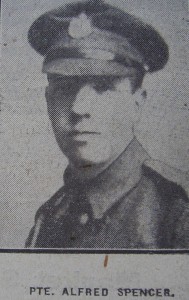 There will be a military funeral in Burnley today. Prior to internment the body will be carried into St Matthews Church. The young man who has made the supreme sacrifice is Pte Alfred Spencer (22) 28566 East Lancashire Regiment. By his death the parents who live at 15, Reynolds Street, have sustained a double bereavement in a very short period. An older son Corporal Thomas Emanuel Spencer, also of the East Lancashire’s, died from wounds in a French hospital on April 4th. Pte Alfred Spencer sustained a very severe and dangerous bullet injury in the head on April 13th and suffered much from loss of blood. He was removed to Fazakerley Hospital, Liverpool, where he died on Tuesday of this week. At one time it was thought that the young man might recover. The bullet was successfully removed, but haemorrhage supervened, and another operation had to be performed; and, in spite of all that could be done for him, death occurred as stated. Pte Spencer joined upon August 17th 1916, after being rejected on three previous occasions. Following a few months training he was sent on active service. In civil life he had latterly been a cloth looker at Proctors Stoneyholme, but previously he worked for years at Fould’s Trafalgar. He was connected with
There will be a military funeral in Burnley today. Prior to internment the body will be carried into St Matthews Church. The young man who has made the supreme sacrifice is Pte Alfred Spencer (22) 28566 East Lancashire Regiment. By his death the parents who live at 15, Reynolds Street, have sustained a double bereavement in a very short period. An older son Corporal Thomas Emanuel Spencer, also of the East Lancashire’s, died from wounds in a French hospital on April 4th. Pte Alfred Spencer sustained a very severe and dangerous bullet injury in the head on April 13th and suffered much from loss of blood. He was removed to Fazakerley Hospital, Liverpool, where he died on Tuesday of this week. At one time it was thought that the young man might recover. The bullet was successfully removed, but haemorrhage supervened, and another operation had to be performed; and, in spite of all that could be done for him, death occurred as stated. Pte Spencer joined upon August 17th 1916, after being rejected on three previous occasions. Following a few months training he was sent on active service. In civil life he had latterly been a cloth looker at Proctors Stoneyholme, but previously he worked for years at Fould’s Trafalgar. He was connected with 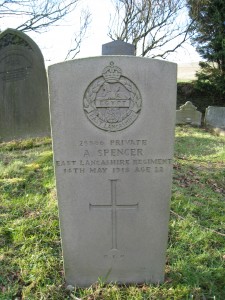 Back Lane Mission of St Matthews Church, and had been a St Matthews Scout. The Reverend S.E. Clark (Vicar) speaks very highly of him as a good worker. He was the youngest of three sons; the eldest is serving with the East Lancashire Field Ambulance. Alfred Spencer enjoyed the intimate friendship of his platoon sergeant, who has been most assiduous in his enquiries. He was in my platoon when wounded, wrote the NCO “In fact we were close against each other, I think it was a toss up whether it was meant for him or myself.” The sergeant writes of his friend as a very good lad and very obliging. The Old Veterans Band will play today from the house to the Church. The 11th Battalion Lancashire Volunteer Regiment is to be represented. Below is the Burnley Newspaper article of the first loss for the Spencers, that of Thomas Emmanuel, Alfred’s Brother.
Back Lane Mission of St Matthews Church, and had been a St Matthews Scout. The Reverend S.E. Clark (Vicar) speaks very highly of him as a good worker. He was the youngest of three sons; the eldest is serving with the East Lancashire Field Ambulance. Alfred Spencer enjoyed the intimate friendship of his platoon sergeant, who has been most assiduous in his enquiries. He was in my platoon when wounded, wrote the NCO “In fact we were close against each other, I think it was a toss up whether it was meant for him or myself.” The sergeant writes of his friend as a very good lad and very obliging. The Old Veterans Band will play today from the house to the Church. The 11th Battalion Lancashire Volunteer Regiment is to be represented. Below is the Burnley Newspaper article of the first loss for the Spencers, that of Thomas Emmanuel, Alfred’s Brother.
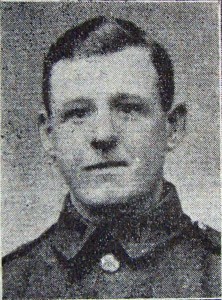 PATIENT AND BRAVE
PATIENT AND BRAVE
In a chaplain’s letter to Mr and Mrs Spencer, 15 Reynolds Street, Burnley, telling of the death of their son Corporal Thomas Emmanuel Spencer (25) 240836, East Lancashire’s, it was stated that after being injured the young man was very patient and made a brave fight for his life. His wounds however were too severe for his strength, and he passed away on April 4th. He sustained gunshot inflictions in the neck, chest, and spine. Corporal Spencer enlisted in October 1914. Before then he was a weaver at Thornber’s Healey Wood Mill. His name figures on the St Matthew’s Roll of Honour. His two brothers are in France. Thomas lies in St Sever Military Cemetery, Rouen, France.
THE WHITE LUND MUNITIONS FACTORY DISASTER
The Family Headstone in Providence Graveyard bearing the name of John Crowther Killed in the Explosion at the White Lund Munitions Factory near Morecambe Lancashire on the first day of October 1917.
In August 1915 the firm of Vickers went into negotiations to build and administrate a filling factory. A site was found at White Lund, which was halfway between Lancaster and Morecambe, and was therefore conveniently placed for receiving empty shells from the 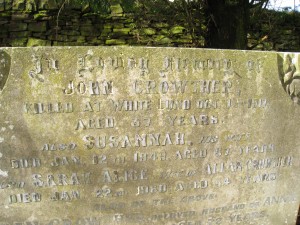 projectile factory at Lancaster and other centres on the North West coast, and for dealing with heavy shells from the Mersey Region. Construction started on the 23rd of November 1915, but due to delays in construction and the delayed confirmation of filling methods of the munitions was finally sorted out in January 1916, output didn’t begin until July 1916. The buildings, of which by far the larger proportions were of wood roofed with felt, consisted of six danger units, 16 bonded stores (the property of the Army Ordinance Department,) a paint shop, an empty shell store, stores and magazines, general offices and canteen, power station and workshop. This lay-out gave the capacity for filling 500 tons pressed or 200 tons melted amatol weekly into shells between 60 pdr to 12in calibre. Total number of shells filled up to Disaster date of October 1917 was 2,893,100. On October 1st a disastrous fire broke out at about 10.30 pm on the upper floor of one of the melt plants. Fortunately, the workers had not returned from supper so the number of casualties that were killed amounted to 10 with a few seriously injured the number of casualties being small when compared to the material destruction caused. Numerous explosions took place some of which were heard as faraway as Rossendale and Burnley, the last of which was at 4 am on the 3rd of October 1917. By 8 am on the 4th of October 1917 the factory was almost entirely destroyed. By that time almost nothing was left but the filled shell stores, paint shed, explosive magazine and part of the power house, all saved by the heroic efforts of the fire brigades attending. The cause of the fire was never established and the inquest on the deaths caused reached a verdict “That the men died from injuries accidentally received whilst carrying out their duty’s in a factory during a fire, there being no evidence to show how the fire originated.”
projectile factory at Lancaster and other centres on the North West coast, and for dealing with heavy shells from the Mersey Region. Construction started on the 23rd of November 1915, but due to delays in construction and the delayed confirmation of filling methods of the munitions was finally sorted out in January 1916, output didn’t begin until July 1916. The buildings, of which by far the larger proportions were of wood roofed with felt, consisted of six danger units, 16 bonded stores (the property of the Army Ordinance Department,) a paint shop, an empty shell store, stores and magazines, general offices and canteen, power station and workshop. This lay-out gave the capacity for filling 500 tons pressed or 200 tons melted amatol weekly into shells between 60 pdr to 12in calibre. Total number of shells filled up to Disaster date of October 1917 was 2,893,100. On October 1st a disastrous fire broke out at about 10.30 pm on the upper floor of one of the melt plants. Fortunately, the workers had not returned from supper so the number of casualties that were killed amounted to 10 with a few seriously injured the number of casualties being small when compared to the material destruction caused. Numerous explosions took place some of which were heard as faraway as Rossendale and Burnley, the last of which was at 4 am on the 3rd of October 1917. By 8 am on the 4th of October 1917 the factory was almost entirely destroyed. By that time almost nothing was left but the filled shell stores, paint shed, explosive magazine and part of the power house, all saved by the heroic efforts of the fire brigades attending. The cause of the fire was never established and the inquest on the deaths caused reached a verdict “That the men died from injuries accidentally received whilst carrying out their duty’s in a factory during a fire, there being no evidence to show how the fire originated.”
Of the ten deaths four were Firemen, with two seriously injured, between Morecambe and Lancaster Firebrigades no less than nine OBEs were awarded, a BEM was awarded to the female telephonist who remained on duty for 24 hours. Other Heroes of that day were Abraham Clarke Graham and Thomas Kew, both off duty railway men (Kew being an engine driver and Graham a shunter) when they heard the alarm and seeing a fully loaded train close to the fire zone, was well aware of the risk of further explosions. He and Kew worked together and removed 54 wagons from the danger zone. No simple task as some wagons were ablaze and exploding and also needed uncoupling before moving. The two men worked tirelessly for about three hours and no doubt averted an even greater disaster. Thomas Kew even patched up a large water tank that had been damaged by exploding shells, this tank fed the sprinkler system and hosepipe fire points, all this done whilst shells were exploding around him. For their selfless bravery they received the Edward Medal from King George V on the 7th of May 1918.
EXERPT FROM THE ROSSENDALE FREE PRESS OCTOBER 6TH 1917
Article by Free press journalist who went under the name of Jax, his columns being named Jottings by Jax. Monday night’s explosions at the North of England Munitions works were plainly heard in the Rossendale district. At midnight and even later there were many people outdoors, exchanging experiences with neighbours and making conjectures as to what was happening. The sounds came in varying intensity; some faint and others comparatively loud like the deep booming of heavy artillery. In many houses the window frames rattled uncannily and at others the sound was of someone having bumped against the door. The police authorities had many enquiries as to the cause and early on they were able (having got the information by telephone) to assure interrogators that the reports were not due to hostile nocturnal visitors. Two men who were on a local hilltop tell me that they distinctly saw the glare of the explosions or of the fire in the sky.
Also reported in Rossendale Free Press Crawshawbooth section.
Death of Mr John Crowther. We deeply regret to record the death of Mr John Crowther a former well-known butcher of this district. He went to work on Munitions some time ago, and his death is the result of the sad catastrophe reported as occurring in the North of England. Much Sympathy is expressed with the bereaved relatives in their sorrow.
In the deaths Column of the same issue was this below.
Crowther
Dedicated to my friend John Crowther who lost his life the 1st day of October 1917, in the North of England Explosion.
Yours is the happier lot; you are free
Forever from the grim unloveliness of these damned days
From all the beastliness that hems us like a goad the sorrow greed.
Of game and Guerdon never satisfied.
You will feed – no more to brood into fresh wakefulness.
The tired spirit; you have forgetfulness.
Of all moan things; pain no longer heed.
Then I cannot, as me thought I should
Grieve over this severance of brotherhood.
But must rejoice always that should aka?
So high in life by sacrifice have gained.
The highest, and in rude marble cross.
Must be a triumph that outweighs all loss.
From Howarth Nuttall, formerly of Crawshawbooth.
The article below appeared in the Morecambe Visitor Newspaper, 2011
LIEUTENANT WILLIAM H WARNER 218th Sqdrn RAF

Also in Providence Graveyard is the family grave of the Warners. On it is commemorated their young son who already held the rank of a Second Lieutenant. The date of his being killed in action recorded on the family headstone coincides with that of the Commonwealth War Graves Commission, which is the 27th of June 1918 whilst serving with the 218th Squadron Royal Airforce and his age is given as a mere 18 years. The Commission also states that he was the son of Aaron and Mary Jane Warner (his mother Mary Jane died in 1906) 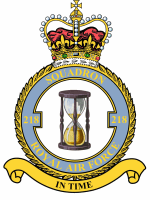 and the family address was 43 Winter Street, Blackburn and William Henry being born in Accrington. He is buried in grave E.lll.16 in Hamburg Cemetery, Germany.
and the family address was 43 Winter Street, Blackburn and William Henry being born in Accrington. He is buried in grave E.lll.16 in Hamburg Cemetery, Germany.
218 Squadron was formed as a daylight bomber squadron on April 24th 1918 under the command of Canadian Major Burt Wemp DFC. It was equipped with the hopelessly underpowered “Puma” engined DH.9 Aircraft which inevitably led to high casualties among the Front Line Squadrons. Lt. William Warner’s aircraft N0 D5687 was delivered to the Aircraft Acceptance Park Hendon, in May 1918, then on to Dover and finally to 218 Squadron, Dunkirk on the 20th May 1918. On the 10th of June 1918 this aircraft crashed on landing with Lt E.H. Dixon and Sgt R.J. Williams onboard but both were unhurt in the accident and the aircraft was repaired and returned to Squadron. On June 26th Lt. William Warner acting as observer to his pilot Lieutenant C. Briggs were part o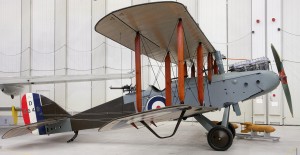 f Captain M.G. Baskerville’s formation of four DH9s, operating over Zeebrugge, opposing them were four German Fokker DV2s from Marine Feldjasta ll defending the coast, this German force also boasted the air ace Vizeflugmeister Alexandre Zenses.
f Captain M.G. Baskerville’s formation of four DH9s, operating over Zeebrugge, opposing them were four German Fokker DV2s from Marine Feldjasta ll defending the coast, this German force also boasted the air ace Vizeflugmeister Alexandre Zenses.
During the ensuing “Dog Fight” Captain Baskerville shot one of the Fokker Scouts down claiming the first aerial victory for 218 Squadron. Unfortunately Lieutenants Briggs and Warner were killed when another Fokker DV2 dived on them and opened fire, the planes wings reported to have folded during the combat, the R.A.F report also states that Warner was avenged by the Sopwith Camel C65 which shot down their attacker.
On the 24th May 1919 a Royal Airforce Casualty Card reporting on the death of 2nd Lieutenant William H. Warner carries a report by his Captain, M.G. Baskervill, who reports “That the machine in which this Officer was flying, was shot by the Germans, and smashed to pieces in the air, the action taking place 4 miles out to sea” he also states “there is no chance at all that they are alive.” William Warner’s Pilot, Lt C. Briggs, is buried in grave B.1 in Blankenburghe Town Cemetery.
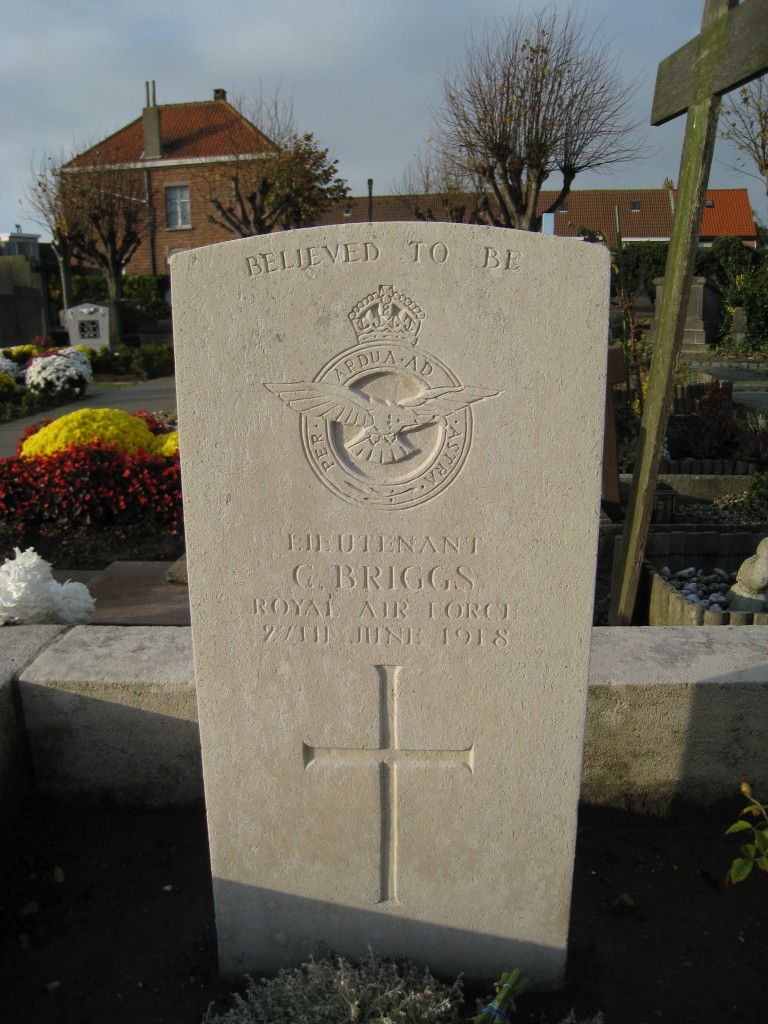
Briggs Grave at Blankenberg.
William was originally buried in Plot 18, grave 6 in Lehe Military Cemetery, Province of Hanover, Germany. I can only assume that his body was carried by the current, and being washed up off the coast of Bremmerhaven Germany and buried in the then nearest Military Cemetery. At some time he was removed and reinterred in Hamburg Military Cemetery as a lot of the smaller Cemetery’s were concentrated into Hamburg military Cemetery.
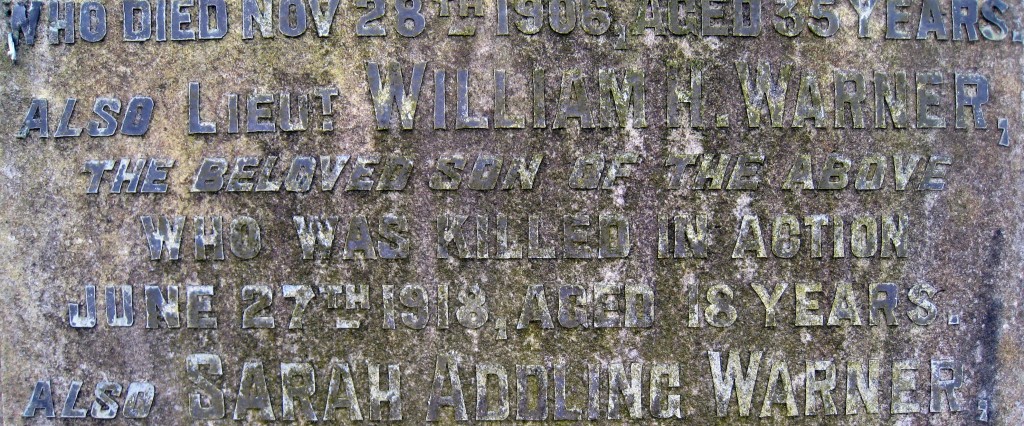 Close up of Second Lt Warner’s Commemoration.
Close up of Second Lt Warner’s Commemoration.

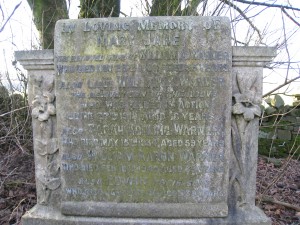
Dave
Great site! Well done.Looks good!
D
Dave,Well done keep up the good work. Mick Dwyer
A great site. I came across when looking for pictures for my English lesson on war poetry. It also happens that Alfred and Thomas Spencer were my Gran’s older brothers. I have letters sent from them during the war and I have found it most interesting finding out more about them from this site.
My Grandfather, EH Dixon flew for the RNAS and transferred to the RAF sometime in 1918. He flew DH9a’s and would therefore presume he is tghe pilot mentioned in the article above on 218 Squadron and the death of Lt Warner. Can I ask where you found the information as I would like to find out more about my grandfathers time during the war?
Peter Dixon
test